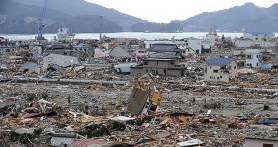

Do a Google Maps search for an image of the Everglades National Park and make note of three things. First, the incredible size of the Park and the hundreds upon hundreds of miles of shorelines along it’s many tidal rivers, creeks, backbays, coastal shoreline and the too numerous to count islands – I consider the coastal Everglades the world’s largest natural maze. Second , the 52-teepee like icons that indicate campsites locations. And third, that most of the campsites are only accessible by means of some sort of watercraft be it a small motor skiff, kayak or a canoe. This along with wildlife and incredible beauty of this coastal park makes camping here more than a just a unique experience but an edge-of-the-world adventure.
Videos by Outdoors
Map reading, navigational skills and access to a watercraft aside, the challenge of camping in the Everglades limits the number of campers who actually camp here every year. And, while you can camp here year round the preferred season is late December up through the end of February. It is during this 10-week period that cooler temperatures prevail in the range of the 50’s and 70’s that knock down the biting and stinging bug population. I’ve pushed the limit of the camping season and either camped too early or too late in the season and lived to regret the experience. Unimaginable swarms of mosquitoes and biting sand flies dominate the evening and morning hours and the bloodletting deer flies will torment you to no end during the day during the warmer months of April through November. But, when you get those nights that cool down to the 60’s and days that barely break 75-degrees it’s hard to imagine a better or more spectacular boating/camping experience.

The park has a number of other attributes that are not found anywhere else in the world. The bird and marine life from roseate spoonbills to manatees, crocodiles and tarpon is almost beyond imagination. So for the birdwatcher, wildlife photographer and fisherman the Everglades is an absolute paradise.
Types of Campsites
I’ve been camping in the Coastal Everglades for over 25-years and can easily count 200-nights or more that I’ve spent sleeping in a tent be it on one of the beach sites, a backcountry ground site or one of the Chickees, a raised and roofed camping platform situated over the water in one of the backbays or tidal rivers.

Beach sites offer the best sunset views and more area to explore on foot but can be tricky when anchoring a small boat due to tidal swings, wind direction and intensity. Ground sites in the backcountry are popular for boaters since they all have a wooden dock to secure your boat but they are more apt to have added mosquitoes. Most ground sites are former Indian camp grounds as evident by the significant amount of discarded clam and whelk shells the Calusa Indians collected for food and then left on the ground around them. Chickees are good for docking boats and canoes but are very limited in space with little to no walking room. With each drawback though there are plenty more in the way of benefits given the sights and sounds you will experience here.
Some of the highlights that I recall are things like listening to the dolphins blow in the rivers while laying down to sleep in my tent or hearing the hoot owls call to each other in the middle of the night, their hoots echoing in the mangrove forest. Watching dolphins group feed on mullet along a beach head or view manatees nursing their young. A never ending fascination for me is seeing giant tarpon rolling on the surface breathing air or feeding on schools of baitfish by going airborne as they leap out of the water in their attempts to feed. Viewing white pelicans against a bluebird sky as they soar above head in V-shaped formations and hearing the wind blow across their wings is awe inspiring in its beauty. Spying large bull sharks or sawfish in the clear shallows in their never ending search for food or witnessing schools of redfish tailing and backing on the grass and mudflats at low tide is a fisherman’s dream. I could go on but the experiences are too many to name and they should be everyone’s and anyone’s who has the chance to camp in this coastal estuarial wonderland.
Boat Camping in the Coastal Everglades
You can do it yourself as I do (I own a 17-foot motorized flats fishing skiff) or hire one of the many canoe/kayak outfitters that offer guided trips along the Wilderness Waterway, a water trail that traverses the whole length of the park from Flamingo on the southern tip of Florida to the Island of Chokoloskee in the middle of the 10,000 Island region of the Everglades on the north west side the Park.

The advantages of trailering a small motor boat is you can bring coolers packed with food, ice and beverages and transport other creature comforts like large tents, folding chairs, lanterns, cooking stoves and the like whereas a canoer or kayaker has to pack the bare essentials and is typically regulated to dry, canned or dehydrated food for sustenance.
All-in-all, the camping experience in the Everglades can’t be beat and if you are fisherman you will be hard pressed to find a fishier haven. Over 30-species of game fish live in these waters many of which make for excellent table fair. Campers are the only ones allowed to clean their catch in the park as long it is for immediate consumption. The fillet of a fresh caught sea trout, pompano or a redfish tastes all that much better while eating it under the clouds of stars over head while breathing the salted air of a cool night.









